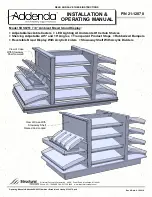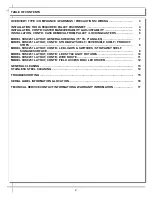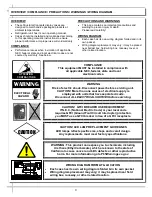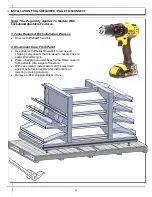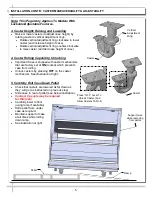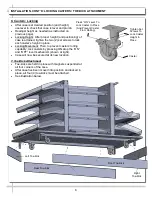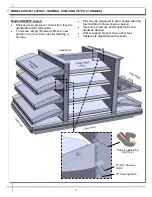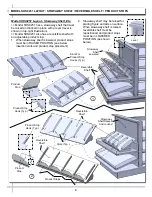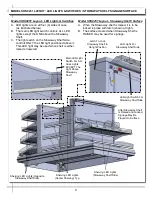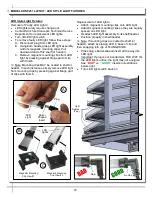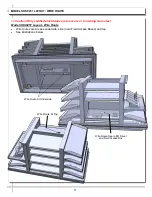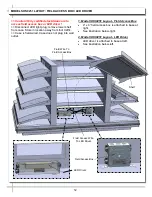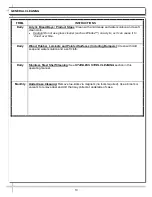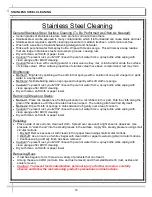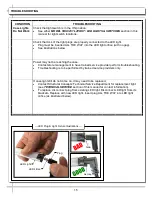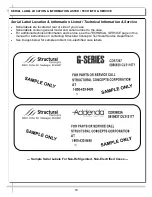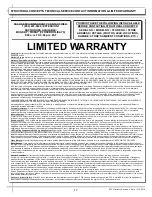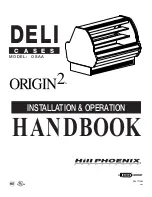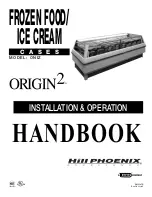
14
STAINLESS STEEL CLEANING
Stainless Steel Cleaning
General Stainless Steel Surface Cleaning (To Be Performed As Often As Needed):
Certain grades of stainless steel are more prone to corrosion than others.
Stainless steel can be exposed to many contaminants, which if left untreated can cause stains and rust.
Stainless steel requires a specific cleaning procedure to maintain its sheen and remain rust-free.
Wash with a solution of liquid dishwashing detergent and hot water.
Rinse with pure hot water from spray bottle. Wipe with clean sponge. This will remove soap residue
that can lodge in stainless steel’s microscopic grooves, causing rust.
Dry with clean, soft cloth or paper towel.
Caution! To prevent rust, you MUST rinse with pure hot water from a spray bottle while wiping with
clean sponge after EACH cleaning.
Caution! Never clean with scouring powder or steel wool as they mar, scratch and/or erode the surface
of stainless steel. When surface properties of stainless steel have been compromised, rust may form.
Brightening:
Method 1: Brighten by polishing with a soft cloth or sponge with a solution of one part vinegar to 2 parts
water in a spray bottle.
Method 2: Sprinkle baking soda on sponge and rub gently with soft cloth or sponge.
Caution! To prevent rust, you MUST rinse with pure hot water from a spray bottle while wiping with
clean sponge after EACH cleaning.
Dry with clean, soft cloth or paper towel.
Removing Streaks or Stains:
Method 1: Place two teaspoons of rubbing alcohol on a microfiber cloth or pad. Rub the cloth along the
grain of the appliance until the entire area has been wiped. The rubbing alcohol will air dry itself.
Method 2: Dip soft cloth or sponge in club soda and rub gently over area of concern.
Caution! To prevent rust, you MUST rinse with pure hot water from a spray bottle while wiping with
clean sponge after EACH cleaning.
Dry with clean, soft cloth or paper towel.
Polishing:
Place a dab of olive oil onto clean soft cloth. Spread over area until a light sheen is observed. Use
pressure to “work the oil” into the small grooves in the surface. Apply firm, steady pressure using small
circular motions.
> Dry buff: Remove excess oil with clean cloth or paper towel using small circular motions.
> Wet buff: Use an ounce of white vinegar with clean cloth or paper towel using small circular motions.
> Continue wiping until oily finish has been removed.
Caution! To prevent rust, you MUST rinse with pure hot water from a spray bottle while wiping with
clean sponge after EACH cleaning.
Dry with clean, soft cloth or paper towel.
Removing Rust:
If rust has begun to form, there are a variety of products that can treat it.
Among these are CLR® (calcium, lime and rust remover) and Chemetall Oakite 33 (rust, oxides and
scale remover).
Caution! To prevent food contamination, personal injury or further corrosion, carefully
observe and follow the rust-removing product
’
s precautions and instructions.

